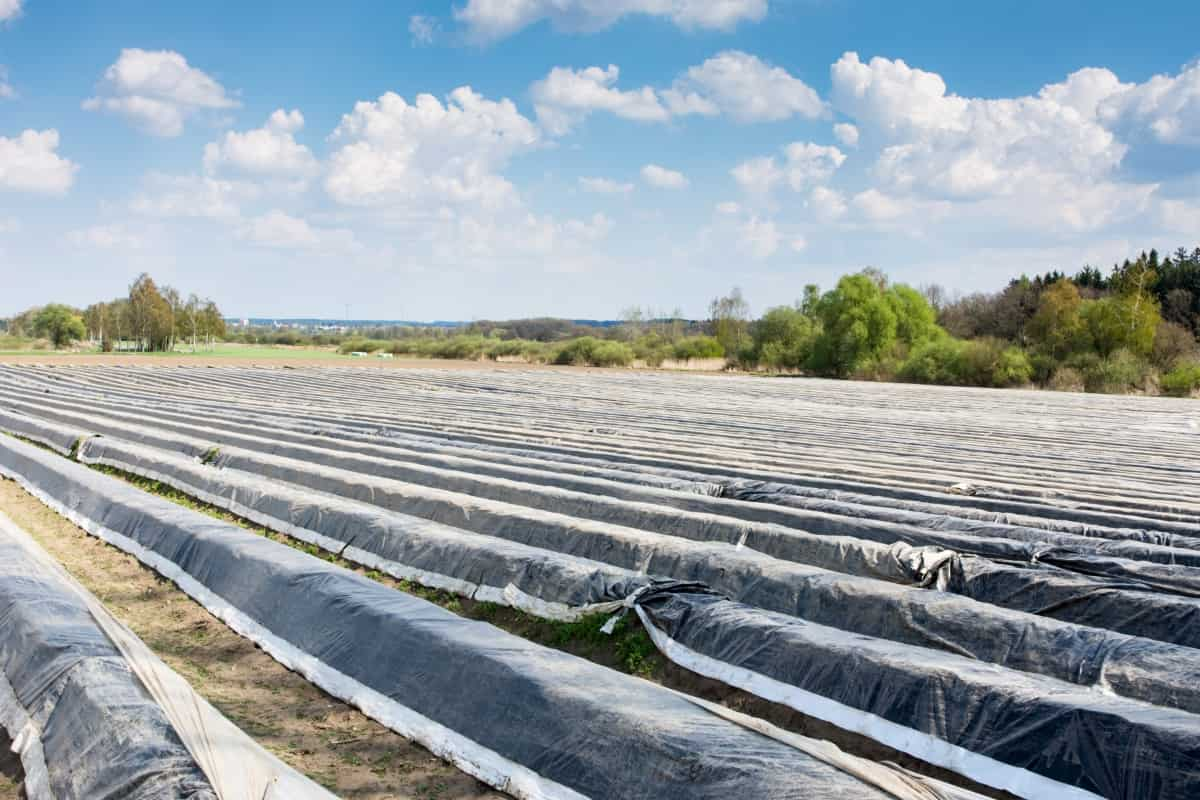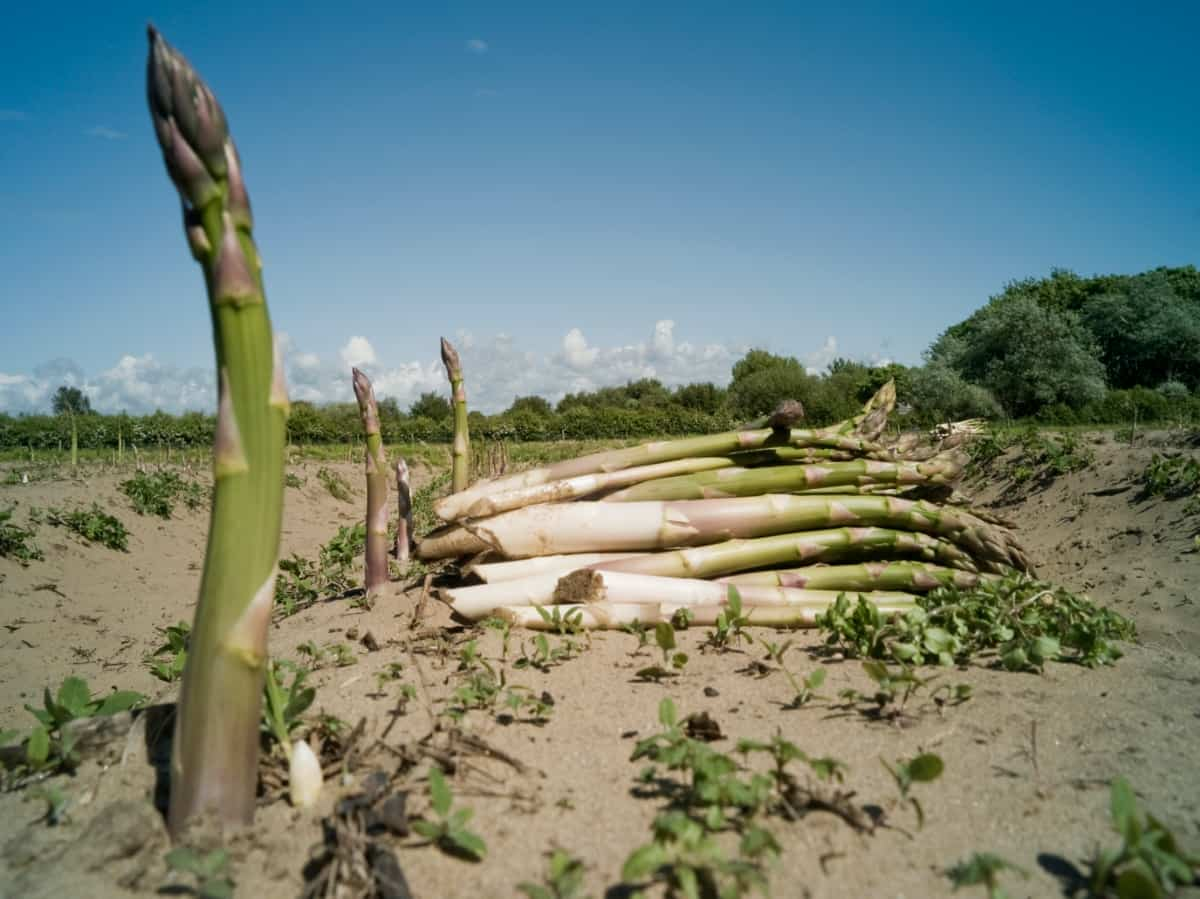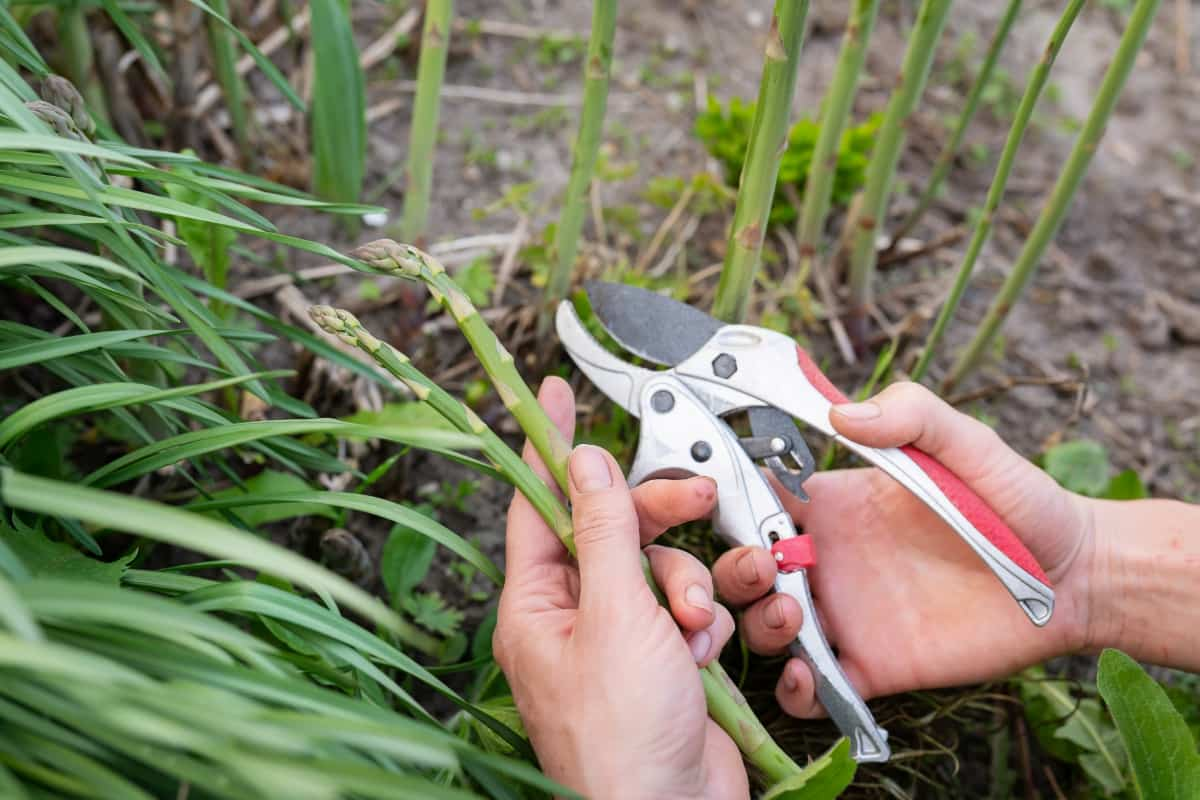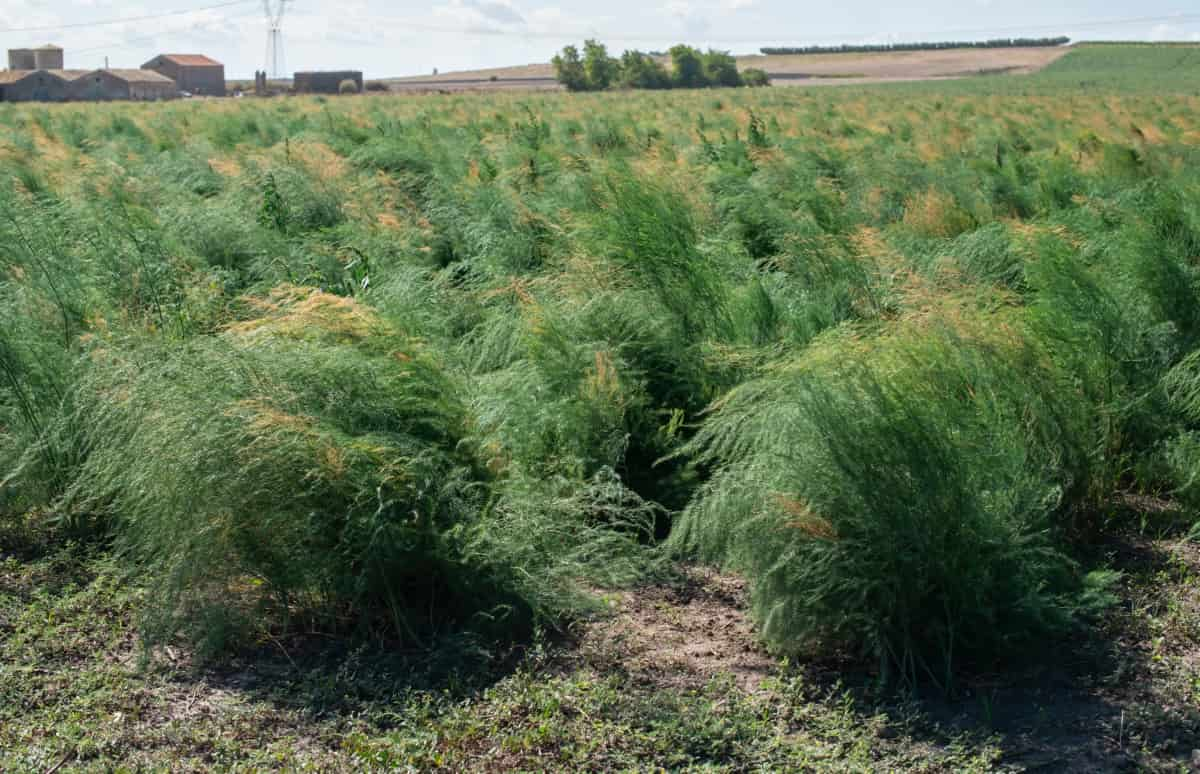Asparagus farming faces numerous challenges, including the management of weeds, pests, and diseases, which are crucial for maintaining healthy crops and ensuring optimal yields. Effective strategies in this regard are vital for the sustainable production of this valuable vegetable.

Weeds in Asparagus Farming
Impact of Weeds, Pests, and Diseases on Asparagus Farming
Weeds, pests, and diseases significantly impact asparagus farming, reducing yield and quality. Weeds compete for nutrients, light, and water, while pests can damage the plant directly. Diseases, often visible as black spots on asparagus, compromise the plant’s health and marketability. It’s essential to understand the impact of these factors to develop effective management strategies. Ignoring them can lead to reduced productivity and even loss of the asparagus crop.
Integrated Pest Management Strategies in Asparagus Cultivation
Integrated Pest Management (IPM) is a holistic approach in asparagus cultivation that combines different management strategies for pests. It involves regular monitoring, identifying pests accurately, and using targeted control methods. This approach reduces reliance on chemical controls and promotes sustainable farming practices.
IPM strategies include using herbicides labeled for asparagus, employing biological controls, and adopting cultural practices that reduce pest habitat. By integrating various methods, farmers can effectively manage pests while minimizing environmental impact.
How to Identify Common Weeds in Asparagus Fields and Control Them
Identifying common weeds in asparagus fields is crucial for effective control. Weeds like crabgrass, dandelions, and thistles can be common invaders. Once identified, various control methods can be employed. Using a post emergent herbicide for asparagus can be effective, alongside manual removal or cultivation practices. It’s essential to use an asparagus weeds management manual for specific guidance, ensuring that the selected herbicide for asparagus doesn’t harm the crop.
Effective Pest Control Methods for Sustainable Asparagus Production
Effective pest control is vital for sustainable asparagus production. Farmers should regularly inspect their fields for pest presence and use a variety of methods to control them. You can use traps, pesticides, and crop rotation to control pests. The aim is to keep pest numbers low without harming the environment or people’s health.
In case you missed it: How and When to Fertilize Asparagus Plants: Requirements and Recommendation

Preventive Measures for Minimizing Disease Outbreaks in Asparagus Farms
Preventive measures are key to minimizing disease outbreaks in asparagus farms. Good agricultural practices, such as proper irrigation and avoiding over-fertilization, can reduce disease risk. Farmers should also monitor their crops for early signs of disease, like asparagus diseases pictures, to act promptly. Crop rotation and using disease-resistant asparagus varieties are also effective in preventing disease outbreaks. Regularly cleaning and disinfecting tools and equipment can help prevent diseases from spreading.
Organic Approaches to Weed Management in Asparagus Farming
Organic approaches to weed management in asparagus farming focus on natural methods rather than chemical herbicides. These include mulching, which suppresses weed growth and retains soil moisture, and manual weeding, which, although labor-intensive, is effective and environmentally friendly. Cover cropping can also be used to outcompete weeds. Organic methods require more labor and attention but are sustainable and safe for the environment.
Biological Control of Pests in Asparagus Fields
Biological control of pests in asparagus fields involves using natural predators or parasites to manage pest populations. This method is part of an environmentally friendly approach to pest management. It includes introducing beneficial insects that feed on common pests or using microbial agents that are harmful to pests but safe for plants and humans. Biological control is a sustainable option that can reduce reliance on chemical pesticides, promoting a healthier ecosystem in asparagus farms.
Managing Fungal Diseases in Asparagus Crops
Fungal diseases are a significant challenge in asparagus farming, often manifesting as wilts, rots, or blights that can severely affect crop yield and quality. To manage these diseases effectively, farmers should start with preventative measures, such as selecting disease-resistant varieties and maintaining optimal field conditions to discourage fungal growth. This includes proper spacing of plants to ensure good air circulation and avoiding excessive moisture around the crowns and spears. Regular monitoring of the crop is crucial for early detection of fungal diseases.
In case you missed it: How to Maximize Yields in Asparagus Farming: Techniques and Strategies

When signs of infection appear, such as discoloration or unusual growths, immediate action is necessary. The use of fungicides can be an effective method of control, but it should be applied judiciously to prevent the development of resistance. Integrating these chemical treatments with cultural practices like proper sanitation, removing infected plant debris, and ensuring balanced nutrition and irrigation, can effectively manage fungal diseases in asparagus crops.
Chemical Treatments in Asparagus Pest and Disease Management
Chemical treatments play a critical role in managing pests and diseases in asparagus farming. While there’s a growing preference for organic and sustainable methods, chemicals remain a key tool, especially in combating severe infestations and diseases that can’t be controlled by other means. The application of herbicides, fungicides, and insecticides must be done carefully and according to the label instructions to ensure effectiveness and minimize environmental impact.
It’s vital to choose products specifically labeled for use in asparagus to avoid harming the crop. For instance, selecting the right herbicide for asparagus is crucial for weed control without damaging the asparagus plants. Similarly, fungicides should be used to target specific fungal diseases, and insecticides should be applied when pest levels exceed economic thresholds.
Farmers should know that pests and diseases can become resistant to chemicals. They should include these treatments in a plan for managing pests called integrated pest management (IPM). This includes rotating chemical products, using them in conjunction with biological controls, and implementing cultural practices like crop rotation and proper sanitation.
Crop Rotation Techniques to Combat Problems in Asparagus Farming
Crop rotation is an age-old agricultural practice that plays a vital role in combating problems in asparagus farming, particularly in managing soil-borne diseases and pests, and improving soil health. This technique involves alternating asparagus with other crops over several seasons. By doing so, it helps break the life cycles of pests and diseases that are specific to asparagus, reducing their presence in the soil.
For instance, rotating asparagus with non-host crops like cereals or legumes can significantly diminish the risk of asparagus-specific pathogens and pest build-up. Additionally, crop rotation contributes to soil fertility. Different crops have varying nutrient requirements and contribute differently to soil structure and organic matter. Variety in the soil keeps it healthy, helps plants grow well, and cuts down on the use of chemical fertilizers.
In case you missed it: Step-By-Step Guide to Planting Asparagus Crowns

Crop rotation also aids in weed management, as different crops allow for different weed control strategies, thereby reducing the weed pressure on the subsequent asparagus crops. However, successful implementation of crop rotation requires careful planning and knowledge of crop compatibility and sequencing. Farmers should consider factors such as the duration of each crop, its rooting depth, water and nutrient needs, and its potential to harbor pests and diseases that could affect asparagus.
Conclusion
Successful asparagus farming hinges on the effective management of weeds, pests, and diseases through integrated and sustainable practices. Emphasizing preventive measures, appropriate chemical treatments, and techniques like crop rotation ensures not only the health of the asparagus crops but also contributes to the long-term viability of the farming ecosystem.
- Feed Your Flock for Less: Top 10 Tips to Save on Chicken Feed
- Ultimate Guide to Ossabaw Island Hog: Breeding, Raising, Diet, and Care
- Hatching Answers: The Top 10 Reasons Your Chickens Aren’t Laying Eggs
- Eggs and Economics: Breaking Down the Cost of Raising Backyard Chickens
- Defend Your Greens: Proven Methods to Keep Iguanas Out of Your Garden
- Ultimate Guide to Cinnamon Queen Chicken: A Comprehensive Guide for Beginners
- Ultimate Guide to California Tan Chicken: Breeding, Raising, Diet, Egg-Production and Care
- Ultimate Guide to Marsh Daisy Chicken: Breeding, Raising, Diet, and Care
- 10 Types of Chicken Farming Businesses You Can Start for Profits